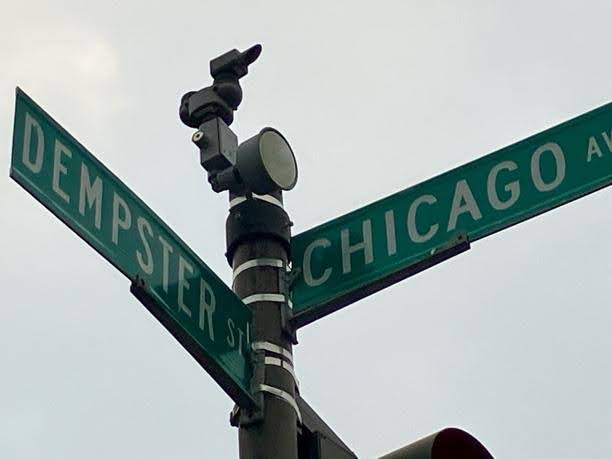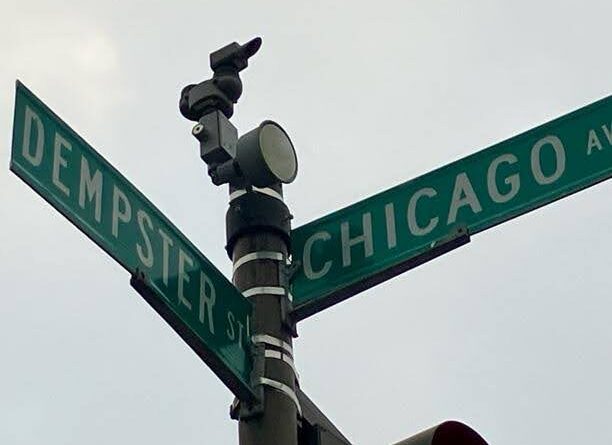Dempster incident highlights need for treatment of severe mental illness – Evanston RoundTable
On a weekend afternoon in mid-July, a local man was walking down Dempster Street near Chicago Avenue with his young daughter and her girlfriend, probably wondering, “Where’s Waldo?” ?”
A hunting method sponsored by Booked on Main Street was underway, sending people to twenty stores along the Main-Dempster Mile business district to find a clueless person from children’s puzzle books, who wearing a red and white beanie and shirt, blue pants and round glasses.
Suddenly, their day took a disturbing turn.
The 36-year-old man, who was in a wheelchair and wearing a black shirt and camouflage pants, started shouting and throwing things at the family.
The girl ran in fear, hiding nearby. Her father prepared to call 911.
Witnesses reported that the offender then got up from his wheelchair, and “without provocation or justification,” punched the father in the face, sending his glasses flying and ‘ his body swayed in the parked car.

Much of this information is taken from a new police report that RoundTable obtained through a Freedom of Information Act request. Names have been withheld to protect the privacy of those involved.
The daughter left shaken, but okay. However, the father went to the emergency room at Evanston Hospital. Two weeks later, his ex-wife said he was “recovering from the surgery and doing well.”
Meanwhile, the victim was not cooperating with law enforcement. He was struggling with paranoia, according to the police report, and allegedly told the officer something to the effect of, “They were harassing me, they were following me thinking they could get me.”
He was handcuffed, charged with two felony counts of aggravated battery and transported to Ascension St. Hospital. Francis for medical attention before returning to police custody. Authorities said about 34 grams of marijuana were found on him – enough to be classified as a misdemeanor.
His address was listed as 2121 Dewey Ave., the same as the office of Connections for the Homeless. A spokesman for the organization, which works to end homelessness, said no one lives there, but homeless people use it to file official documents and receive mail.
Medical confidentiality laws limit what information officers can share about a suspect’s condition. But thinking about why an incident like this may have happened may help to avoid similar conflicts in the future.
The roots of violence
It just passed guest description in Crain’s Chicago Business argues that “homeless people are disproportionately affected by mental health problems. [like] depression, anxiety, PTSD, physical health problems and substance use problems [that] they are often exacerbated by the stress and uncertainty of living without a home.”
Similarly, the Center for Treatment Advocacy, a national nonprofit organization based in northern Virginia, report that “people with untreated serious mental illness make up an estimated one-third of the total homeless population in the United States” and face high risks.
But even if the Dempster Street attacker was homeless and struggling with mental illness, that alone does not explain the violent outburst. However, excessive use of cannabis is ineffective lessons is associated with an increased risk of psychosis. Nor would severe mental illness, such as schizophrenia or bipolar disorder, be diagnosed, which can be accompanied by terrifying visions.
So what could possibly compel a man to beat up a complete stranger on a summer afternoon?
Most violent acts are “perpetrated by people who are not mentally ill,” the Center for Advocacy Therapy says. But others are made by “a small number of people with serious mental illnesses,” almost all of whom are “untreated.” Those incidents usually occur when the perpetrators are “abusing alcohol or drugs.”
In short, violence is not caused by severe mental illness, but it can be caused by lack of treatment, especially in combination with drug abuse.
Of course, we don’t know if this incident on Dempster Street was caused by severe untreated mental illness, but the encounter provides an opportunity to take a serious look at the need for available treatment, especially by respond to episodes of psychosis, paranoia or delusions.
The problem of priorities
In recent years, as concerns about mental health issues and the stigma surrounding them have become popular causes, so, too, have slogans like “homes first.” However, the irony is that sometimes people with a history of violence or criminal convictions may be barred from entering such homes.
This kind of exception is, in part, why some mental health advocates argue programs that offer good news but ignore the more difficult cases – the small percentage of people who may harm others, if not themselves – are wrong.
For frequency side effects – when people have multiple diagnoses, such as severe mental illness and substance use disorders, for example – some argue that the priority should be “treatment first.”
But while addiction treatment is almost always available, the barriers to psychotherapy are many.
As Dr. E. Fuller Torrey explained to American Psychosis: How the Federal Government Destroyed the Mental Illness Treatment Systemeven if the intentions were good, mental health facilities – and access to them – have been severely damaged for nearly 60 years.
It’s a problem that Chicago Mayor Rahm Emanuel’s administration has exacerbated, according to WTTW. reportit closed “six of the city’s 12 mental health clinics” more than a decade ago.
The city of Evanston has worked hard expanding mental health services and improving crisis response, but its programs may turn away those most in need of mental health care.

A Crisis Alternative Response in Evanston (BE CAREFUL) program that began in July uses two-person teams of “trained civilian responders for low-level 911 calls” instead of armed law enforcement officers — a smart move intended to reduce the likelihood of manic episodes they can cause harm. fatal tragedy.
City too, like RoundTable reportordered $1.5 million two years ago to establish an Evanston-based facility Living room at Turning Point Skokie, where people in crisis can visit “for free, and receive on-site care from a team of behavioral health professionals.”
US Representative Jan Schakowsky – congresswoman from Evanston – and Mayor Daniel Biss it helped to start that center last month.
However, like Turning Point Behavioral Health Care Center website note, the program “accommodates vulnerable adults who search [emphasis added] security and solutions in a quiet and comfortable environment. ”
There it is: a large proportion of people with severe mental illness suffer from anosognosia, the medical term for patients who are unaware of their mental state.
According to me National Alliance on Mental Illness (NAMI)“almost 30% of people with schizophrenia and 20% of people with bipolar disorder” get it wrong. Some estimates go higher.
Therefore, someone may suffer from a mental illness, but because they cannot recognize their illness, they will not seek care and often refuse the medication that is given to them.
Those people may need inpatient treatment or enroll in a community commitment program known as outpatient treatment assistancewhich uses court supervision to link patients and community services to a treatment plan.
Center for Treatment Advocacy found that Illinois has above-average laws governing such treatment, but, with at least 50 psychiatric hospital beds per 100,000 people it is necessary to “provide adequate treatment for people with mental illness mental capacity,” the ability is still woefully lacking.
As of 2023, there were only them 1,359 such beds for the state’s 12 million people, less than a third of whom were available outside the criminal justice system.
That makes up about 0.01% of the population of Illinois, while the National Institute of Mental Health estimates that 5.5% of Americans have a “serious mental illness,” defined as an illness that causes “severe functional impairment” that interferes with major life activities. The NIMH study also found that 65.4% of the 14.1 million US adults with a serious mental illness received treatment by 2021, meaning that 5 million of them were not treated at all.
Thrown behind bars
The RoundTable asked local mental health groups about what would happen if someone with violent tendencies or someone in crisis were brought to their doorstep against their wishes.
Turning Point referred operational questions to its medical experts but, a week later, the organization had not responded.
Similarly, the executive director of a local non-profit organization declined to comment on the incident, preferring only to highlight the people the organization serves, not those it does not.
Their avoidance begs the question: if people in mental health treatment won’t talk about the challenges of serving the most desperate among us, who will?
The reality is that many people who fall through the cracks of society – people who may not have access to mental health services or don’t even know they need them – can end up imprisoned.
A non-profit, non-participatory Prison Policy Initiative reports that “the jails and prisons of the United States incarcerate far too many people with current or past mental health problems,” and “are still not meeting the need for treatment.”
Even Cook County Sheriff Tom Dart appreciated that the county jail – where the cost of incarcerating each person $45,828 per year – has always been “a dumping ground for people with serious mental health problems.”
Regarding the Dempster incident, a county sheriff’s spokesman confirmed that the suspect was being held at the Cook County Jail. The police report said the investigation is ongoing.
Related Stories
#Dempster #incident #highlights #treatment #severe #mental #illness #Evanston #RoundTable






